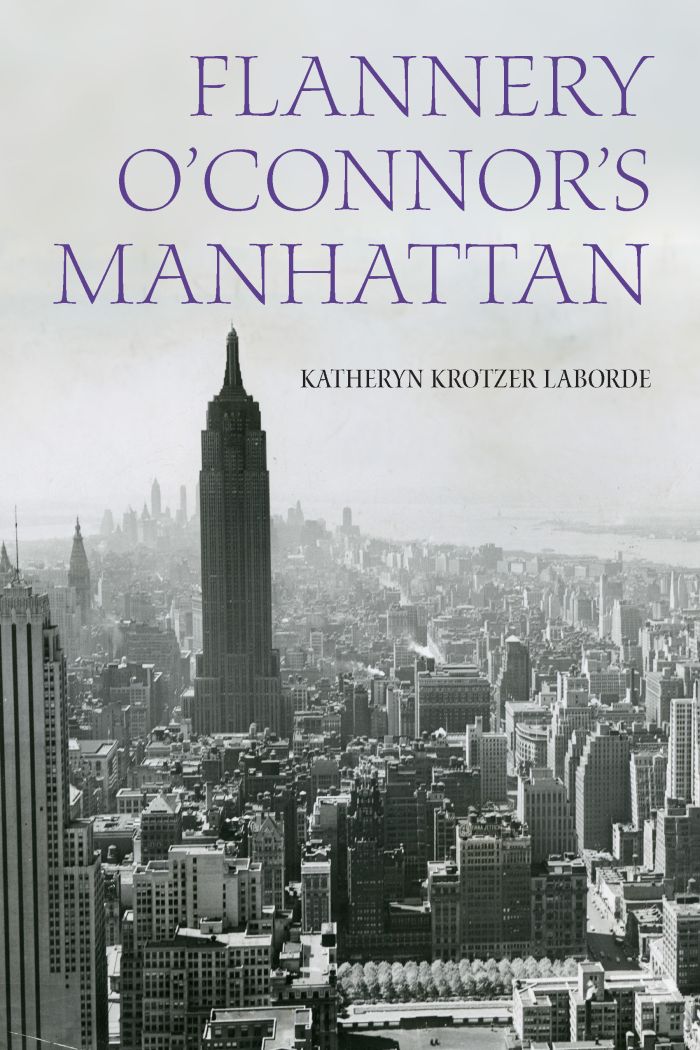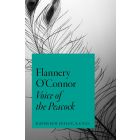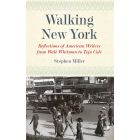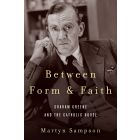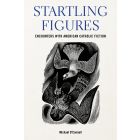Flannery O'Connor's Manhattan

This book can be opened with

This book offers a unique twist to the Who’s Who of midcentury writers, editors, and artists
Much is made of Flannery O’Connor’s life on the Georgia dairy farm, Andalusia—a rural setting that clearly influenced her writing. But before she lived on that farm, before she showed signs of having lupus, before she became dependent on her mother and then succumbed to the disease at thirty-nine, O’Connor lived in the northeast. She stayed at the artists’ colony Yaddo in 1948 and early 1949 and lived in Connecticut with good friends from fall of 1949 through all of 1950. But in between those experiences, and perhaps more importantly, O’Connor lived in Manhattan.
In her biographies, little is said of her time in Gotham; in some sources, this period gets no more than one sentence. But little is said because little has been known. In Flannery O’Connor’s Manhattan, the author’s goal is to explore New York City from O’Connor’s point of view. To do this, the author consults not just letters (both unpublished and published) and biography, but five personal address books housed in Emory’s Stuart A. Rose Manuscript, Archives and, Rare Book Library. The result is a book of interest to both the O’Connor fan and the O’Connor scholar, not to mention those interested in midcentury Manhattan.
Flannery O’Connor’s Manhattan is part guide to the who-was-who and who-lived-where of New York from roughly 1948 to 1964, at least those as they mattered to O’Connor. It also acts as a window to the writer’s experiences in the city, whether she was coming into town for a series of meetings or strolling down Broadway on her way to lunch. In the end, it is the combination of the who-she-knew and the what-she-did that formed O’Connor’s personal view of what is arguably the most famous of American cities.
Laborde does some great sleuthing on O’Connor’s relationship to Manhattan and the many Manhattanites with which she corresponded throughout her life. Though I have seen some of these 'little books' in the Emory Archives, and though I had an accurate but cursory sense of O’Connor’s time living in Manhattan already, I was unaware of some of the correspondents she had over the years.—Mark Bosco, S.J., Vice President for Mission & Ministry, Georgetown University
Preface: In Search of Flannery’s Manhattan | xi
Introduction: The Tour Begins | 1
PART I: New York City
1 The Education of Mary Flannery O’Connor | 19
2 City Life | 25
3 A Good Man Is Hard to Find | 37
4 Lourdes Bound | 43
5 New York, O’Connor, and Lee | 46
PART II: The Listings
6 A through G | 53
7 Writers and Other Artists | 69
8 H through N | 87
9 Three Correspondents | 110
10 O through Z | 120
Acknowledgments | 137
Appendix: Parts of Town: Residents and Businesses | 141
List of Abbreviations | 145
Notes | 147
Bibliography | 173
Index | 185

